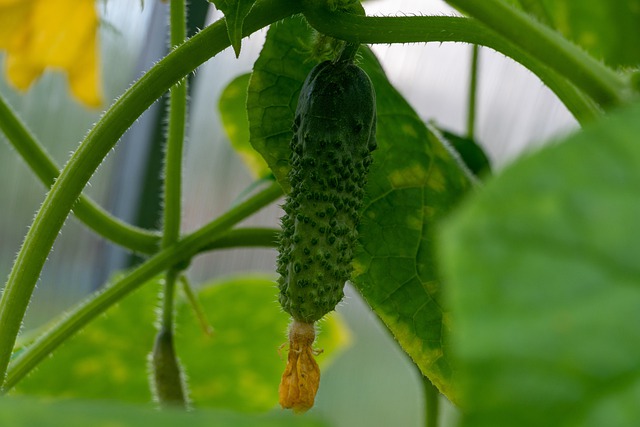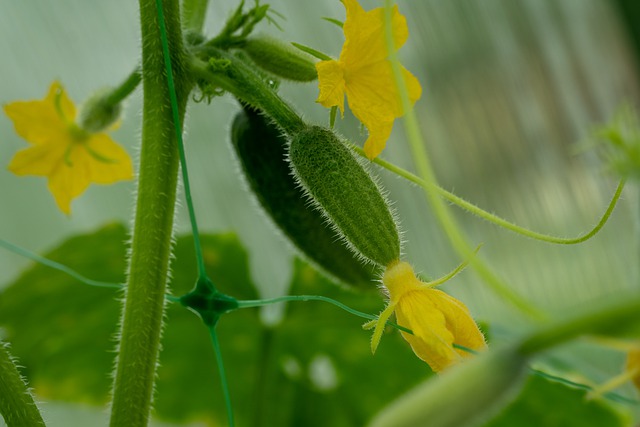Bush cucumbers are a type of cucumber that is typically found in tropical and subtropical regions. The plant is a vine that typically grows to around 20 feet in length and produces small, greenish-white fruits. Bush cucumbers are often used in Asian cuisine and are known for their slightly sour taste.
The bush cucumber plant is native to Southeast Asia and is commonly found in Malaysia, Indonesia, and the Philippines. The plant was introduced to the United States in the early 1900s and is now grown in many tropical and subtropical regions worldwide.
Bush cucumbers are relatively easy to grow and can be cultivated in various soil types. The plants are typically propagated from seed and will begin to produce fruit within 3-4 months of planting. You can grow them in the container also.
How To Grow Bush Cucumbers?
Bush cucumber can be grown in a pot or on the ground. If you’re looking for a plant that will provide an abundance of fruit with little care, look no further than the bush cucumber. This hardy plant can produce huge yields with minimal effort and is a great choice for both experienced gardeners and beginners alike. Here’s what you need to know about growing bush cucumbers in your garden. Here are the steps :

Choose The Right spot:
When trying to get the best possible yield from your bush cucumbers, choosing the right spot to grow them is important. Bush cucumbers need full sun to produce properly, so ensure that the area where you plant them gets at least six hours of direct sunlight each day.
The soil should also be well-drained and loose, as cucumbers need plenty of water but will not do well in soggy conditions. Adding some compost or other organic matter to the soil before planting will help to improve drainage and provide nutrients for the plants. Once you have found the perfect spot, you can be confident that your bush cucumbers will thrive.
Prepare The Soil:
Preparing the soil to grow bush cucumbers is important for several reasons:
- Cucumber plants need well-drained soil to thrive.
- The soil should be loose and friable so the roots can easily penetrate it.
- The soil should be rich in organic matter so the plants can access the nutrients they need.
To prepare the soil, till it to a depth of at least 12 inches and mix in a 2-inch layer of compost. If the soil is heavy clay, mix in some sand to improve drainage. Place a 2-inch layer of mulch on top of the soil to help retain moisture and control weeds.
Plant The Seeds:
Once the soil is prepped, you can Plant the seeds about 1/2 inch deep and 12 inches apart. After Planting, water the seeds well and keep the soil moist until they germinate. Once the seedlings have emerged, thin them out to be 6-8 inches apart. Bush cucumbers need to be watered regularly and fertilized every few weeks.
If you live in a hot climate, you may need to provide some additional shading for your plants during the hottest part of the day. With a little care and attention, you will soon be enjoying fresh cucumbers from your very own bush cucumber plants!
Water The Plants:
Watering the plants is essential to growing bush cucumbers. The plants need a lot of water, especially during the hot summer. Water them deeply and regularly, about once a week. Be sure to water around the base of the plant, not just the leaves. Bush cucumbers are drought-tolerant, so they don’t need as much water as other vegetables. However, they do need enough water to produce a good crop of cucumbers.
Watering the plants will also help to keep the leaves from turning yellow. Yellow leaves indicate that the plant is not getting enough water. If you see yellow leaves, increase the water you give the plants. Watering the plants is an important part of growing bush cucumbers. Without enough water, the plants will produce fewer cucumbers.
Fertilize The Plants:
Fertilizing the plants is also important for getting a good crop of cucumbers. Bush cucumbers need to be fertilized every few weeks. Use a balanced fertilizer, such as 10-10-10, and apply it according to the package directions. You can also use compost or manure to fertilize the plants. Just be sure not to overdo it, as too much fertilizer can burn the plants. A little bit of fertilizer will go a long way in helping the plants to produce a good crop of cucumbers.

Protect The Plants From Pests:
Inspect your cucumber plants regularly for early signs of pests or diseases, such as wilting, yellow leaves, or stunted growth. Immediately prevent the problem from spreading if you see any of these symptoms. Check for common cucumber pests, such as aphids, cucumber beetles, and whiteflies. You can control these pests with special insecticidal soap or neem oil products.
You can also discourage pests by planting trap crops, such as nasturtiums, around your cucumber plants. Diseases are often spread by watering plants from overhead, so be sure to water at the base of the plant. Remove any infected leaves promptly, and dispose of them in the trash to prevent the disease from spreading. With extra care, you can enjoy a bumper crop of healthy bush cucumbers all season long!
Harvest The Cucumbers:
Once the plants start producing cucumbers, you can begin harvesting them. Bush cucumbers are ready to harvest about 50-60 days after planting. To harvest, cut the plant’s cucumbers with a sharp knife. Be sure to leave a few inches of stem on the cucumber, so you don’t damage the plant.
You can also let the cucumbers grow to full size and pick them. However, they will be less tender and have a more bitter flavor if you let them grow too long. It’s best to pick them when they are about 6-8 inches long. Once you start harvesting, the plants will continue to produce cucumbers throughout the summer.
Wrapping Up
In conclusion, bush cucumbers are great for growing in the home garden. They are easy to care for and will provide you with a bountiful harvest of delicious cucumbers all season long! Just be sure to water them regularly, fertilize them every few weeks, and protect them from pests and diseases. With a little care and attention, you will be enjoying fresh, homegrown bush cucumbers in no time! Thanks for reading!
